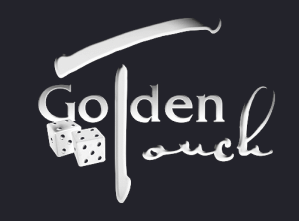
How To Choose Starting Hands In Texas Hold em Poker
Starting Hands
The most important decision you will make when playing Texas Hold'em is choosing your starting hands. Most players lose because they play too many hands. There are 169 possible two-card starting hands. There are 13 cards in each suite, 2 thru ace. You get two cards so 13 x 13 equals 169. Hands of equal rank but different suits are counted as one because they have the same value before the flop. For instance an Ace and King of hearts has the same value as the Ace and King of spades, clubs or diamonds.
Of these 169 hands there are only about 75 that are profitable to play. Not all of these hands can be played from every position and some of them require more players entering the pot to be profitable.
Suited cards are a little more powerful than unsuited cards because of their flush potential however many novice players put too much value on suited cards. When you start with two suited cards you will only make a flush 5 percent of the time. Many novice players make the mistake of playing any two suited cards.
The combination of starting hands will fall into four categories.
Pocket Pairs
Big pairs are powerful starting hands. A pair of Aces is the best starting hand but a pair of deuces is a weak hand that can only be played in late position in an unraised pot. Some medium pairs can win the pot but with the smaller pairs you will be looking to make a set or possibly a straight draw. The odds of being dealt a pair as a starting hand is 16 to 1 or about one in every 17 hands. The odds of being dealt a specific pair such as a pair of aces is 220 to 1.
Connectors
Cards that are next to each other are called connectors. They can be suited or unsuited. These are hands like K-Q, J-T or 9-8. Connectors are used in making straights. Suited connectors can make straight flushes, straights or flushes.
Gapped Cards.
Gappers are hands that have one or more gaps between them. These are cards like Q-T, J-9 or A-8. The smaller the gap the easier it is to make a straight. With a hand that has a gap you are looking to fill an inside straight if you play these or possibly a flush if they are suited. As with the connectors the suited cards have more potential.
Big Cards
Cards of a higher value than ten are considered big cards. Suited cards are more valuable than unsuited cards. These hands still fall into the categories of connectors or gapped hands but because of their higher value they can sometimes stand on their own if you pair them up on the flop. Big cards play better against fewer players.
A pair of Aces is the strongest starting hand before the flop. With only two cards there is nothing higher. Aces do not always stand up as the winning hand after the flop especially if there are a lot of players involved in the hand. In a heads up situation a pair of aces will win about 80 percent of the time, however against ten players they will only win about 35 percent of the time.
The weakest starting hand is an unsuited seven and deuce. There are five gaps between the two cards making a straight impossible. Because they are not suited you cannot make a flush either.
Many players in low-limit games will play any Ace regardless of the second card. Many players have found themselves a loser when an ace flops and they are beat out by a player with a bigger kicker. Some novice players will just play any two cards. They are looking for miracle flops to improve their hands. Although it is possible to get a miracle flop occasionally it will not make up for the times you will lose if you play any two cards. To be a consistent winner a player needs to choose the correct starting hands and play them from the correct position.
Next month I’ll continue the discussion of starting hands.
Until next time, remember:
"Luck comes and goes...Knowledge Stays Forever!"


